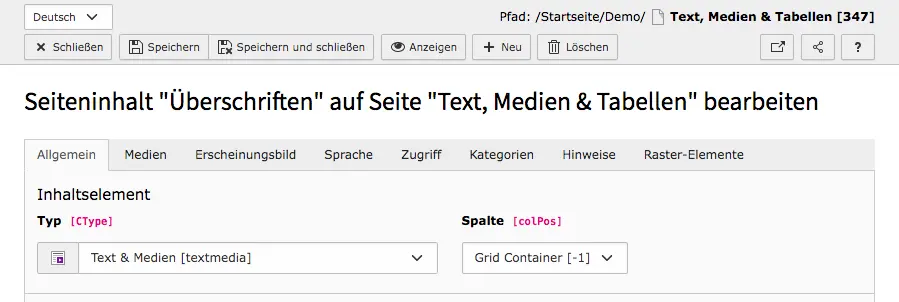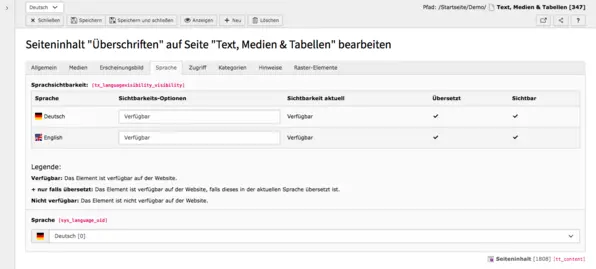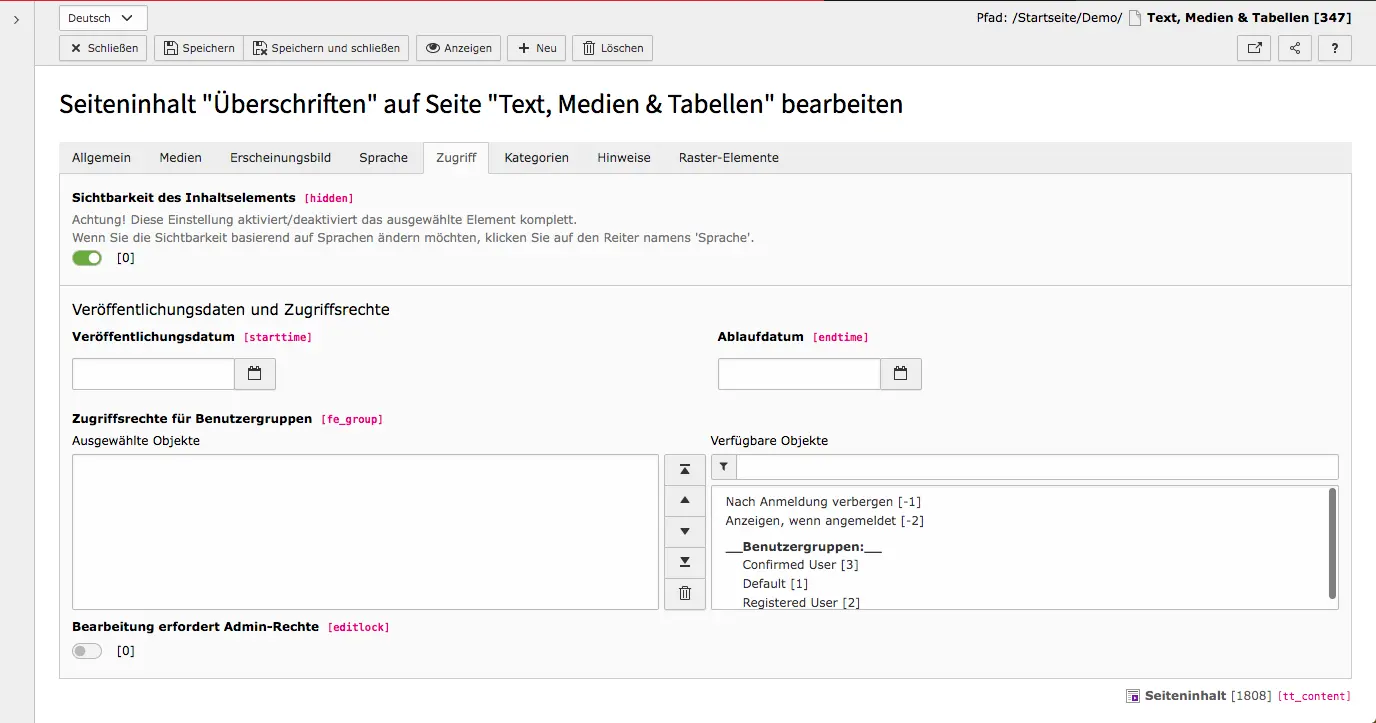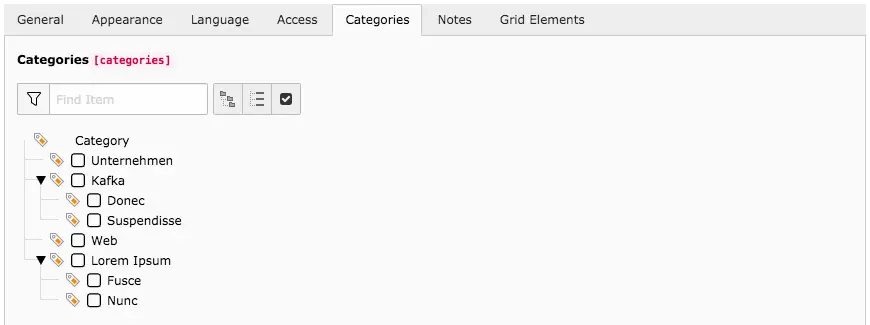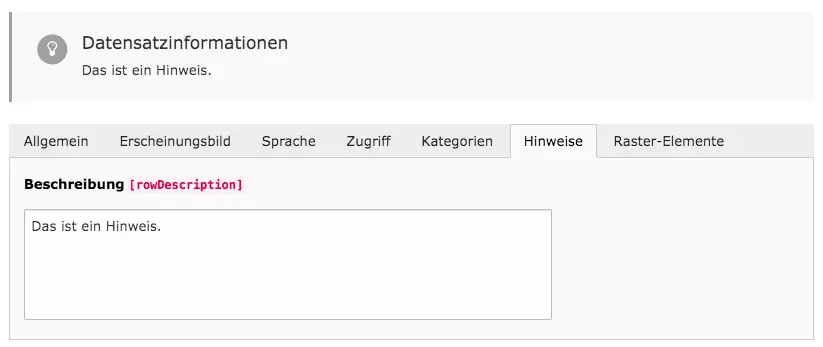In the Access tab, the general visibility of a content element can be determined. When editing and creating TYPO3 pages, the access can also be defined for the whole page, which can be customized in the page properties. Just as elements can be enabled and disabled in the content area, it is also possible to make this setting in the edit mode of an element. When the slider under visibility of content element is set to green, the page is activated and in the front end.
In addition, you can set a publish and expiration date, and if you click in one of the two fields for this, you will also find that you can even set the time. If only the time of publication is set, the TYPO3 element will be visible on the website from then on and will remain visible. If only the expiration date is set, the item will appear immediately on the page (assuming it's enabled) and will remain visible until the time you set.
With user group access rights, you determine which users should or should not be shown content. For example, people who are already logged in should not see the login window. To set the access rights, proceed as follows:
